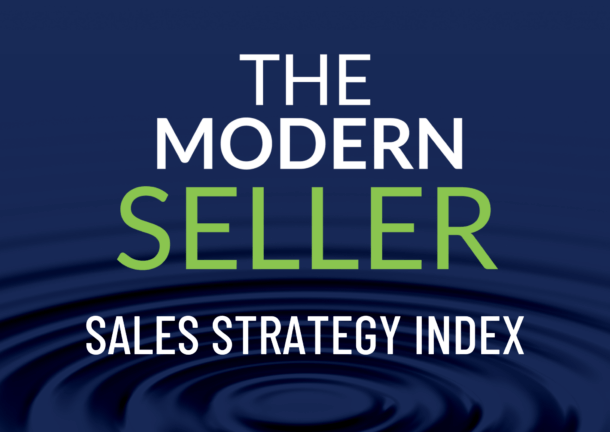In this article, Amy Franko shares important lessons for board directors and board development. Recent research shows that strategy and talent development are areas where board directors wish to focus more time. Amy specializes in these areas; as an entrepreneur and growth expert she is ideal for growth-oriented companies in technology, manufacturing, and professional services. View Amy’s resume.
The Girl Scouts had me at their mission: “We build girls of courage, confidence, and character who make the world a better place.” In 2014, I had been searching for an opportunity to be more engaged and involved in my Columbus, Ohio community. As the oldest of five daughters, this mission spoke volumes.
Nine years later, I’m still inspired by our very youngest Girl Scout Daisies through our high school-aged Ambassadors. No matter their age, they make a tangible difference and build lifelong leadership attributes. That can include mastering a new skill, learning about the outdoors, participating in our entrepreneurial Cookie Program, or putting in the significant work (200+ hours!) on their Gold Award projects.
I recently completed a successful, four-year term as the Chair of the Board of Directors for Girl Scouts of Ohio’s Heartland, a Top 25 non-profit in the Columbus, Ohio region with over $22 million in assets. I led a governance board of 21 directors. Along the way I had the unique opportunity to lead governance efforts surrounding a $16 million capital campaign, dubbed “Dream Big,” and launched it during the pandemic. We broke ground on our STEM leadership center and maker space, a visionary workforce development initiative and community gem helping our youth build critical skills for the future.
Eight Lessons for Board Directors
It has been a rewarding journey, and from this vantage point of reflection, I’m offering some of my most important learnings along the way.
- Use your unique path as a source of strength for a board leadership role. I’ve not had a traditional career journey, or the traditionally held skills of “typical” board directors and board chairs. I see this changing for the better across many boards, where a diversity of skill sets and experiences are becoming a much stronger focal point. My background is growth strategy, sales, and entrepreneurship; given our challenges and opportunities, they were the right skills for the right time. I’m a big believer in the timing of the leader – my skills and my leadership style were the right match. Your career path and skills are unique to you. Try not to compare your path to others; when you find the right match at the right time, it’s magic for board chemistry and success.
- Be a facilitator of conversations, ideas, and decisions. My goal was to allow different voices and opinions to be heard, and balance that with the requirement of timely decisions. There’s a practice cited in Harvard Business Review, bimodal leadership, by which a leader stays tuned into when to lead from the front (decisive action) and when to lead from behind (consensus building and allowing others to lead the way). Pandemic scenarios required quick and decisive action by me, the CEO, and our executive committee. Our capital campaign raise required much more consensus-building through focus groups, financial modeling, board engagement, and significant relationship building with community partners. My role was not to be in the limelight unless the situation called for it. There were of course times when that was required for the good of the mission, but the primary place for the Board Chair was to be in partnership with the CEO and the Board.
- Go an inch wide versus a mile deep in most situations. This played to my strengths as being both strategic and futuristic. I appreciated executive summaries because I trusted that they were rooted in the extensive detailed expertise of committee work. Much of the board’s work was handled in committee, and ultimately my decision making rested firmly on the trust of my fellow board members, committee members, and organizational leaders.
- Keep a pulse on the board talent pipeline (as the Board Chair). I had the great fortune to start my board career with the Board Development committee, which is also known on some boards as Nominating & Governance. My tenure included two years as Committee Chair. This committee is responsible for identifying and nominating board talent, identifying and evaluating skill requirements, building a board slate, and ensuring board succession. My role in this committee early in my board career bolstered my passion for board talent and provided direct leadership experience in building a strategic and diverse board. In moving to the Board Chair role, the board development experience was foundational to helping me stay aware of our board talent pipeline and provide input on future skills needed.
- Build strong C-suite relationships. My relationship with my CEO was a cornerstone of success. I can’t overemphasize this one enough. My CEO will tell you that each Board Chair has a unique style to which she and the leadership team needed to adapt. It’s not a negative at all; new leadership brings fresh perspectives and new energy. Style matters and needs time for adaptation. Whether it’s leadership style, communication style, or overall relationship style. There’s a decades-old concept in organizational development that applies to any team, anywhere. Tuckman’s stages of group development: Every team goes through the phases of forming, storming, norming, and performing. In our case, my CEO and I had the benefit of working together while I chaired the Board Development / Nominating Committee for two years. And while coming into the Board Chair role was a different set of responsibilities, the baseline of trust and understanding helped to form, storm, norm, and get to performance much more quickly.
- Stay in the governance lane. This is another one that can’t be overemphasized. Too many boards and board chairs get into the operational lanes – at best it creates confusion, and at worst it interferes with the organization’s ability to perform, plus running the risk of conflicts of interest. I’m often asked about my definition of governance. Here is how I define it and my role: My role is to lead the Board in a way that ensures overall stability, effectiveness, financial stewardship, and longevity of the organization through its structures. I, along with our committees, facilitate thoughtful questions and conversation, and shine a light on potential opportunities and risks. The role of the CEO, executive leadership team, and staff is to lead day-to-day operational decisions and activities within the structure. To be fair, there can sometimes be a fuzzy line between governance and operations; for example, the CEO may bring forward an operational issue simply to make me aware of the actions being taken and provide me the opportunity to ask questions or offer perspectives. But the decision and implementation are in the hands of the CEO and staff.
- Take the opportunity to shore up high-impact skills. In the Board Chair role, I was considered an ex-officio member of all committees. Committees are chaired by a member of the board, and my style was to delegate that leadership responsibility to those committee chairs. There was one committee I consistently attended, the finance committee, for three key reasons. First, finance wasn’t part of my professional background, and this gave me the opportunity to build a new set of skills. Second, because finance wasn’t part of my background, I brought a different perspective and asked different questions than my committee peers. Third, we were embarking on a $16 million capital campaign that required additional governance structures. I helped shape those structures in alignment with the finance committee, and as a result was better able to communicate those structures to our Board, donors, and other important parties. The lesson in all of this was to be open about the skills I didn’t have but wanted to build, and then find a way to do it. Even without the background that most of my committee members possessed, I could still find a way to add value while being a student myself.
- You’re as successful as your successor. This is a nod to the power of succession planning. Whether it’s the CEO role or the Board Chair role, the current leaders’ success is connected to that of the next CEO or Board Chair. It’s not a compliment to the previous leader when the successor CEO or Board Chair fails in the role (as in “they couldn’t do it without me”). Lack of succession planning presents a HUGE risk to the organization. From my perspective, it’s a governance imperative and this was one of my priorities from the moment I stepped into the role. Succession planning was a collaboration between me, our CEO, and two committees of the Board. We designed two succession plans, one for the CEO and one for the Board Chair. The Executive Committee owns the annual review and approval of the CEO’s succession plan, and the Board Development Committee owns the annual review and approval of the Board Chair’s succession plan.
I invite you to take the lessons that most resonate with you and apply them to your own board path, whether you’re just beginning your journey or you’re a seasoned board director. What have you learned along the way on your board journey? Please feel free to share this article with your best board lessons and tag me on LinkedIn. When we share our best lessons, we can create a ripple effect on the board director community and the organizations we serve.
***
Amy Franko serves as Immediate Past Chair of the Board of Directors for Girl Scouts of Ohio’s Heartland, a Top 25 non-profit organization in the region with $22M in assets. During her four-year term as Chair, she led a governance board of 21 directors. The organization consistently ranks in the top 10% of 110 councils nationwide in key growth and performance metrics. She also led governance efforts surrounding a $16M capital campaign for a STEM leadership center. She serves on the finance committee and was chair of the board development/nominating committee for two years. Read Amy’s full bio, and connect with her on LinkedIn.


 Our Strategic Selling signature sales training program is now available online. This online sales learning program is ideal for professional services and B2B sales. Get started with 2 free lessons.
Our Strategic Selling signature sales training program is now available online. This online sales learning program is ideal for professional services and B2B sales. Get started with 2 free lessons.